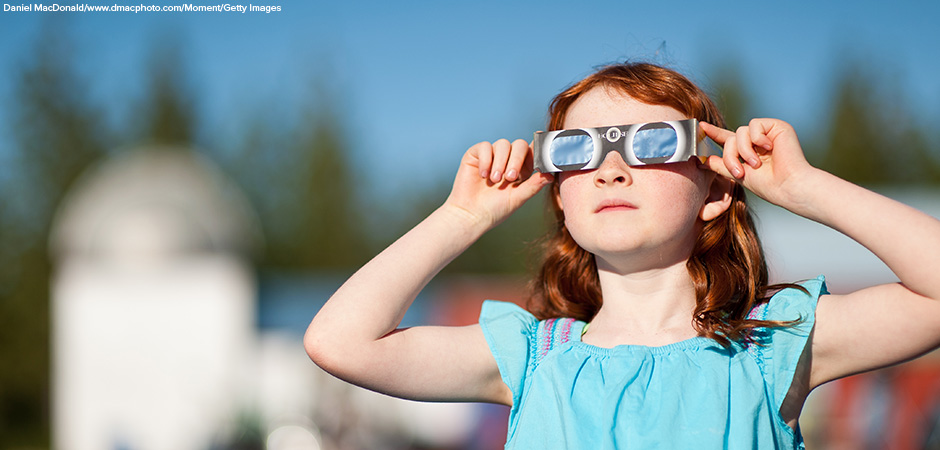
A total solar eclipse will occur across a large part of the United States on April 8, 2024. Although solar eclipses happen every year or two, this eclipse is different. It is expected to be the most watched eclipse in history. In addition, new technology will allow people who have visual disabilities to experience the eclipse.
What Is a Solar Eclipse?
A total solar eclipse occurs when the Moon lines up perfectly between the Sun and the Earth. The Moon completely blocks the Sun, and the Moon’s shadow, or umbra, is briefly cast on the Earth. Those who are in areas lying within this shadow will experience daylight turning into dusk. Stars and planets may become visible in the darkened sky that emerges.
A partial eclipse occurs before and after a total eclipse as the Moon moves in its orbit in front of the sun. On April 8, 2024, the entire eclipse will last about two and a half hours. Depending on where a person is located within the Moon’s shadow, the period of totality, or total blockage of the sun, will last from about one minute to four and a half minutes.

The Path of Totality
Not everyone on Earth will see the total eclipse on April 8. The path of the Moon’s shadow will stretch diagonally across North America, from Mexico in the southwest to Canada in the northeast. The shadow will be about 115 miles (185 km) wide as it crosses thirteen U.S. states from Texas to Maine. More than 30 million Americans live in the direct path of the eclipse. Millions more will travel to be within the shadow. Many cities, museums, and schools within the path of totality have planned watch parties for this event. The next total eclipse to cross the United States coast-to-coast will occur in 2045.
How to View the Eclipse
Looking directly at the Sun during the eclipse—even for a few seconds—will damage eyes and may even cause blindness. Regular sunglasses are not effective either. Viewers need special eclipse glasses to watch as the Moon covers and then uncovers the sun. The lenses of eclipse glasses are made of a special black resin that filters almost all visible, infrared, and ultraviolet light. Viewers may remove their eclipse glasses only for the few minutes when the entire Sun is totally blocked.
“Listening” to the Eclipse
The Harvard University Astronomy Lab created a device for people with visual disabilities to also experience the eclipse. LightSound is a handheld unit about the size of a cell phone. It turns the brightness of light into sound. The sound of a flute represents regular daylight. As the eclipse causes sunlight to dim, the sound of the flute changes to that of a clarinet. Soft clicks indicate the moments of totality darkness.
The team at Harvard started creating LightSound before the 2017 solar eclipse. Allyson Bieryla, the lab manager, wanted everyone to have access to an eclipse event and to astronomy in general. She worked with astronomer Wanda Diaz Merced, who is blind. Merced was instrumental in using sonification to turn space data into sound. The Harvard team has distributed more than 700 LightSound devices to organizations that are holding eclipse events. The team has also provided instructions so that people can create their own devices with their own sounds.
